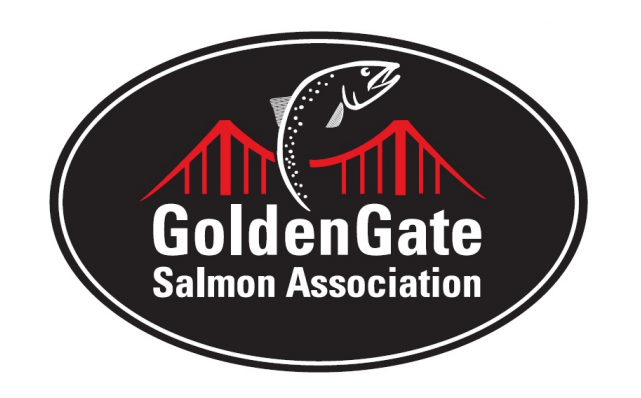Feather River Fish Report for 3-27-2018
Baby Salmon and Extra Water Headed Down the Feather River
Feather River - Oroville, CA

by Michael Coats
3-27-2018
Website
Low Number of Spring-run Salmon Hang in the Balance
The California Dept. of Fish and Wildlife announced the release of 500,000 baby spring run salmon Monday from the Feather River hatchery, about a quarter of the two million that would be released in a normal year. The hatchery failed to get enough eggs from the estimated 1200 adult spring run that returned to spawn in the summer of 2017 to meet its normal production goal. The number of returning adults was extremely low as a consequence of drought in 2015 when those fish were released as babies into the Feather River.
Baby salmon have evolved to make the move to the ocean in high volume, muddy spring runoff. Instead, during the drought, they encountered low, clear water which is highly favorable to predators that target baby salmon.
The release of the fish Monday was accompanied by a release of extra water by the California Dept. of Water Resources from Oroville Dam to mimic natural runoff conditions needed by baby salmon to survive the trip. The extra water is expected to cue natural origin baby salmon in the upper Feather River to move downstream and join the exodus of the hatchery fish scheduled to be released downstream of the confluence with the Yuba River.
Water managers at Oroville Dam cut back on water releases last week during the rain to save the extra water for this week’s release. The Golden Gate Salmon Association (GGSA) applauded the Department’s recognition of the need and value of spring pulse flows to improve survival of the baby salmon.
“GGSA has pushed for spring pulse flows for years so it’s good to see the Dept. of Water Resources acknowledge the value these flows provide to baby salmon,” said GGSA president John McManus.
In 2017 very few salmon returned to spawn for the third straight year because of the lack of spring flows and other hostile conditions in Central Valley salmon rivers during the drought. As the condition of Central Valley salmon stocks becomes better known, recognition of the need for spring pulse flow releases from Central Valley reservoirs is increasing.
“One of the biggest factors harming our central Valley salmon stocks is a lack of dedicated water released in the spring when the baby salmon need to be flushed down to the Delta and bay,” said GGSA board member Mike Aughney. “Today’s release of water from Lake Oroville will greatly help natural origin baby salmon in the upper reaches of the Feather River until they get down below the confluence with Honcut Creek where natural runoff will start to kick in. Then it will add to all of the runoff moving these salmon down to the Delta, bay and ocean.”
“Last week’s storms are providing good runoff now in the Central Valley and the release today from Oroville gives these precious few salmon a kick start to boost their survival,” said McManus.
Meanwhile, California is considering funding a water recycling project in southern California that could provide future spring pulse flow releases for salmon on the Feather River. The Inland Empire Utilities Agency has applied for Prop 1 funds to expand its existing waste water recycling and groundwater storage program. In return for the extra recycled water, IEUA says that in dry times, southern California would forego some water from the Feather River, instead relying on the new recycled water. In return, about 50,000 acre feet of water behind Oroville Dam could then become available for spring pulse flows for salmon. Salmon advocates see great promise in such an approach and hope it will be funded by Prop 1 and attract other similar offers.
The Golden Gate Salmon Association is a coalition of salmon advocates that includes commercial and recreational salmon fisherman, businesses, restaurants, a native tribe, environmentalists, elected officials, families and communities that rely on salmon. GGSA’s mission is to protect and restore California’s largest salmon producing habitat comprised of the Central Valley river’s that feed the Bay-Delta ecosystem and the communities that rely on salmon as a long-term, sustainable, commercial, recreational and cultural resource.
Currently, California’s salmon industry is valued at $1.4 billion in economic activity annually - according to Southwick Associates - in a normal season and about half that much in economic activity and jobs again in Oregon. The industry employs tens of thousands of people from Santa Barbara to northern Oregon. This is a huge economic bloc made up of commercial fishermen, recreational fishermen (fresh and salt water), fish processors, marinas, coastal communities, equipment manufacturers, the hotel and food industry, tribes, and the salmon fishing industry at large.
< Previous Report Next Report >
< Previous Report Next Report >
More Reports

1-12-2018
The twin tunnel WaterFix project has died at least twice but it has re-emerged once more. The Delta Stewardship Council...... Read More

12-28-2017
It’s with great sadness that the Golden Gate Salmon Association announces the passing of Captain Roger Thomas from pancreatic cancer....... Read More

Website Hosting and Design provided by TECK.net